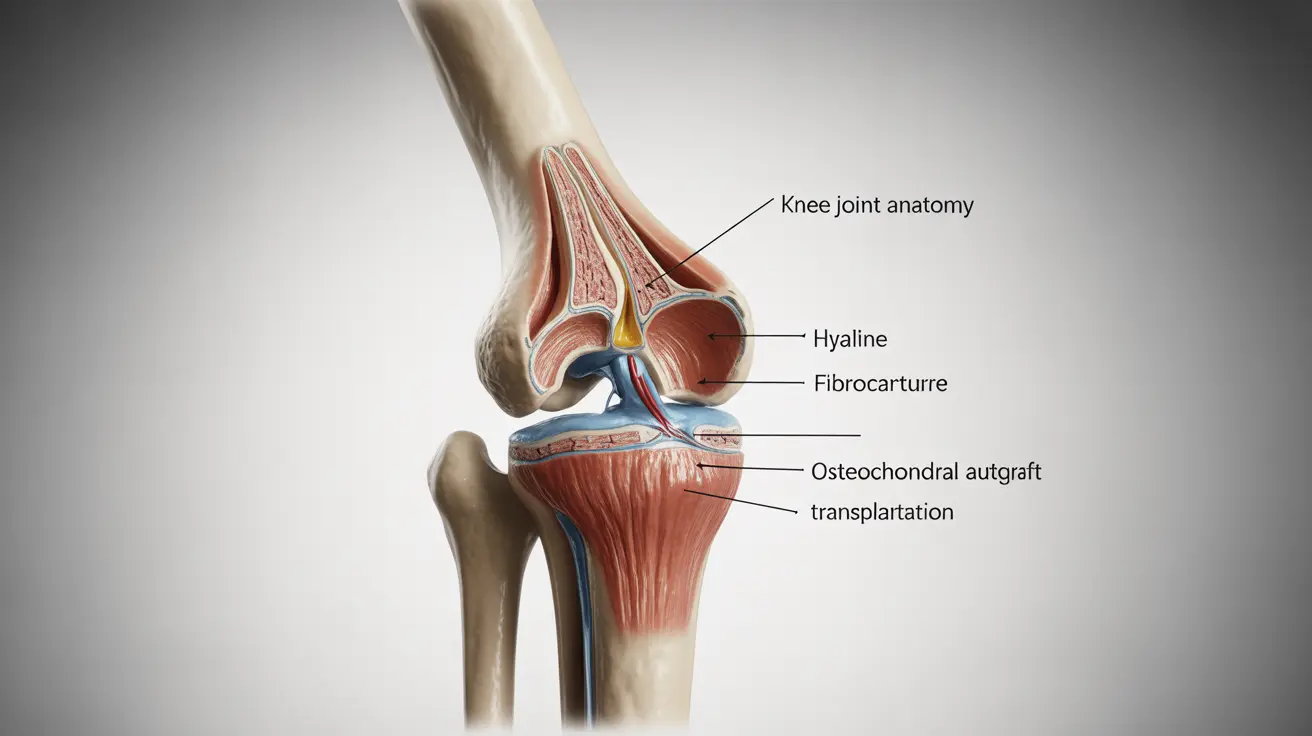This guide aims to provide HR professionals and business leaders with actionable steps to create, implement, and manage a successful wellness program. By addressing various aspects of health, including physical, mental, and emotional well-being, the guide ensures a comprehensive approach to employee wellness. The insights draw from industry best practices and the innovative solutions offered by GetLabTest.com, a leading digital health platform known for its cutting-edge technology in health screenings, telehealth consultations, and AI-driven health analytics. Leveraging the capabilities of GetLabTest.com can enhance the effectiveness of a corporate wellness program, making it more accessible, data-driven, and impactful. This comprehensive guide is designed to help organizations foster a healthier, happier, and more productive workforce.
Understanding the Importance of Corporate Wellness
Employee Health and Well-being: Firstly, a strong connection exists between employee health, job satisfaction, and productivity. When employees are healthy, they tend to be more energetic, focused, and motivated, leading to higher levels of productivity and efficiency at work. Healthier employees are also more likely to be satisfied with their jobs because they feel supported by their employers in maintaining their well-being. This satisfaction can reduce turnover rates, foster loyalty, and create a more positive workplace environment. Companies that invest in wellness programs demonstrate that they value their employees' holistic health, which can significantly boost morale and engagement.
Economic Benefits: Secondly, the economic benefits of a robust corporate wellness program cannot be overstated. Organizations can save substantial amounts through reduced absenteeism and lower healthcare costs. Healthier employees are less likely to take sick leave, which means fewer disruptions in workflow and less need for temporary replacements. Additionally, wellness programs can help in early detection and prevention of chronic diseases, which can significantly reduce long-term healthcare expenses. Employers who offer comprehensive wellness programs can also potentially lower their health insurance premiums due to a healthier workforce. In the long run, these economic benefits contribute to a healthier bottom line, making the investment in corporate wellness both a strategic and financially sound decision.
Initial Assessment and Planning
Creating an effective corporate wellness program begins with a thorough initial assessment and careful planning. This foundational step ensures that the program is tailored to meet the specific needs of the organization and its employees, setting the stage for long-term success.
Employee Needs Assessment: The first step in the initial assessment is conducting a comprehensive employee needs assessment. This can be achieved through surveys, focus groups, or one-on-one interviews to gather detailed insights into the health needs, preferences, and concerns of the workforce. Understanding what employees value in a wellness program—whether it's fitness initiatives, mental health support, nutrition guidance, or flexible work options—helps in designing a program that is both relevant and engaging. This participatory approach not only uncovers critical health issues that may need addressing but also fosters a sense of ownership and enthusiasm among employees, as they feel their input is valued and considered.
Resource Allocation: Once the needs assessment is complete, the next step is to determine the budget, resources, and personnel required to support the wellness program. Resource allocation involves setting a realistic budget that covers various aspects of the program, including health screenings, wellness activities, incentives, and promotional materials. It also involves identifying internal and external resources such as wellness coordinators, health professionals, and fitness trainers who will help implement and manage the program. Additionally, leveraging digital platforms like GetLabTest.com can streamline many processes, offering efficient health data management, telehealth services, and AI-driven health insights. Proper resource allocation ensures that the program is sustainable, scalable, and capable of delivering measurable results over time.
By prioritizing employee needs and carefully planning resources, organizations can build a strong foundation for a wellness program that not only improves health outcomes but also enhances employee engagement and productivity.
Key Components of a Corporate Wellness Program
Designing a comprehensive corporate wellness program involves integrating several key components that address various aspects of employee health and well-being. These components should work synergistically to create a supportive and health-focused workplace environment.
Health Screenings: Regular health screenings are a cornerstone of any effective wellness program. These screenings help in early detection and prevention of potential health issues, thereby reducing long-term healthcare costs and improving overall employee well-being. Platforms like GetLabTest.com offer accessible and reliable health screenings that can be seamlessly integrated into corporate wellness initiatives. These screenings provide vital health data that can be used to tailor individual wellness plans and track health improvements over time.
Fitness Initiatives: Fitness initiatives play a crucial role in promoting physical health. Establishing fitness challenges, subsidizing gym memberships, or offering on-site fitness classes can motivate employees to stay active. Regular physical activity is known to boost energy levels, enhance mood, and reduce the risk of chronic diseases. Companies can organize friendly competitions, provide fitness tracking tools, and encourage group activities to foster a culture of fitness and camaraderie among employees.
Mental Health Support: Mental health support is an essential component of a holistic wellness program. Providing resources such as counselling services, stress management workshops, and mindfulness training can help employees manage stress and maintain mental well-being. Mental health initiatives can include Employee Assistance Programs (EAPs), access to mental health professionals, and workshops on topics like resilience, work-life balance, and mindfulness. Creating a stigma-free environment where employees feel comfortable seeking help is crucial for the success of these programs.
Nutrition Programs: Nutrition programs are vital for promoting healthy eating habits. Offering healthy eating options in the workplace, such as nutritious snacks and balanced meal choices, can encourage better dietary habits. Educational sessions on nutrition can further empower employees to make healthier food choices. These programs can include cooking classes, personalized nutrition plans, and challenges like "Healthy Eating Month." By making nutritious options easily accessible, companies can significantly impact their employees' overall health and productivity.
Incorporating these key components into a corporate wellness program can lead to a healthier, more engaged, and productive workforce. Each component addresses a critical aspect of health, ensuring a well-rounded approach to employee well-being.
Designing the Program
Designing an effective corporate wellness program involves strategic planning and thoughtful customization to meet the diverse needs of the workforce. This ensures that the program is inclusive, accessible, and capable of delivering significant health benefits.
Customizing Wellness Plans: Customizing wellness plans is essential to cater to the varied health needs and preferences of employees. This process begins with analyzing the data gathered from the initial needs assessment. By understanding the unique health challenges and interests of different employee demographics, companies can develop tailored wellness programs. For example, younger employees might prefer fitness challenges and sports activities, while older employees might value health screenings and chronic disease management. Inclusivity is key—programs should be designed to be accessible to all employees, regardless of their physical abilities or health conditions. This could involve offering a range of activities that cater to different fitness levels and providing flexible options that allow employees to participate at their own pace and comfort level. Ensuring that the program accommodates everyone fosters a sense of belonging and encourages greater participation.
Incorporating Technology: Incorporating technology can significantly enhance the effectiveness and reach of a wellness program. Platforms like GetLabTest.com provide advanced health data management, telehealth consultations, and AI-driven health insights. These technologies make it easier to track and analyze health data, enabling personalized health recommendations and interventions. Telehealth consultations offer convenient access to healthcare professionals, reducing the need for employees to take time off work for medical appointments. AI-driven insights can help identify potential health risks and suggest proactive measures to mitigate them. Additionally, wearable devices and mobile apps can be integrated into the wellness program to monitor physical activity, nutrition, sleep patterns, and other health metrics in real time. This data can be used to create personalized wellness plans and track progress over time, ensuring that employees receive the support they need to achieve their health goals.
By customizing wellness plans and leveraging technology, companies can design comprehensive wellness programs that not only address the diverse needs of their workforce but also promote sustained engagement and improved health outcomes. These strategies ensure that the wellness program is not just a one-size-fits-all solution but a dynamic and responsive initiative that evolves with the needs of the employees.
Implementing with GetLabTest.com
Integrating GetLabTest.com into your corporate wellness program can streamline implementation and enhance its effectiveness through advanced technological solutions. This platform offers a range of tools and services that support comprehensive health screenings, telehealth consultations, and AI-driven health insights.
Health Screenings and Data Management: Leveraging GetLabTest.com’s platform for health screenings allows companies to offer regular, comprehensive health checks for their employees. These screenings can identify potential health issues early, ensuring timely intervention and treatment. The platform's secure health data management system ensures that all employee health information is stored safely and can be accessed easily when needed. By integrating health screenings into the corporate wellness program, companies can monitor the overall health of their workforce, track improvements over time, and make data-driven decisions to enhance the program's effectiveness. The convenience of having a centralized system for health data also simplifies the administrative process, reducing the burden on HR departments.
AI-Driven Health Insights: One of the standout features of GetLabTest.com is its AI-driven health analytics. By analyzing health data collected from screenings and consultations, the platform provides personalized health insights and recommendations for each employee. These insights can highlight potential health risks and suggest preventive measures, helping employees take proactive steps towards better health. AI-driven analytics also enable the customization of wellness plans, ensuring that each employee's unique health needs are addressed. This level of personalization can significantly enhance employee engagement and participation in the wellness program, as they receive relevant and actionable health advice tailored to their specific conditions and lifestyle.
By incorporating GetLabTest.com into your corporate wellness program, you can provide comprehensive, accessible, and personalized healthcare solutions for your employees. This integration not only improves health outcomes but also demonstrates a commitment to employee well-being, fostering a healthier and more productive work environment.
Implementation Strategies
Effectively implementing a corporate wellness program requires strategic communication, attractive incentives, and robust support structures. These elements ensure high participation rates, sustained engagement, and a positive impact on employee health and well-being.
Communication and Promotion: A multi-channel communication strategy is essential for promoting the wellness program and ensuring that employees are well-informed about its benefits and opportunities. Utilize email campaigns to send detailed information about the program, upcoming events, and success stories. The company's intranet can host a dedicated wellness section with resources, FAQs, and sign-up forms. Social media platforms can be used to share engaging content such as wellness tips, motivational quotes, and reminders about ongoing activities. Regular updates through these channels keep the program top-of-mind and encourage continuous participation. Additionally, organizing informational sessions and webinars can help in addressing employee queries and generating excitement about the program.
Incentives and Rewards: Introducing incentives and rewards is a powerful way to motivate employees to participate in the wellness program. Offer tangible rewards such as discounts on health-related products and services, gift cards, or additional leave days for those who actively engage in the program. Recognition programs, such as “Wellness Champion of the Month,” can also foster a competitive spirit and encourage participation. Incentives should be aligned with the wellness goals and tailored to appeal to different employee demographics. For example, fitness enthusiasts might appreciate gym memberships, while others might value mental health workshops or nutritional coaching sessions. These rewards create a sense of accomplishment and make the wellness program more appealing.
Training and Support: Providing comprehensive training for wellness program coordinators is crucial for the program’s success. These coordinators should be well-versed in the program's components, goals, and implementation strategies. Regular training sessions can equip them with the necessary skills to manage the program effectively, troubleshoot issues, and motivate employees. Ongoing support for employees is equally important. Establishing a support system, such as a dedicated helpdesk or wellness hotline, ensures that employees can easily access assistance and resources. Peer support groups and wellness ambassadors can also play a role in fostering a supportive environment where employees feel encouraged to participate and share their wellness journeys. By ensuring that both coordinators and participants have the support they need, companies can maintain high engagement levels and achieve their wellness objectives.
A well-executed communication strategy, attractive incentives, and comprehensive support systems are key to the successful implementation of a corporate wellness program. These strategies help in building awareness, encouraging participation, and sustaining engagement, ultimately leading to a healthier and more productive workforce.
Monitoring and Evaluation
Effective monitoring and evaluation are critical components of a successful corporate wellness program. By tracking participation, gathering feedback, and making data-driven adjustments, organizations can ensure their wellness initiatives remain relevant and effective.
Tracking Participation and Outcomes: To monitor engagement and health outcomes accurately, utilize digital tools and platforms that offer comprehensive tracking capabilities. Platforms like GetLabTest.com can provide real-time data on employee participation in health screenings, telehealth consultations, and other wellness activities. Tracking tools can measure metrics such as the number of participants, frequency of participation, and specific activities engaged in. Health outcomes can be monitored through periodic health screenings and assessments, enabling the organization to evaluate improvements in employee health over time. This data helps in identifying trends, measuring the program's impact, and determining which components are most effective. Regular reporting and dashboard summaries can provide valuable insights for HR professionals and wellness coordinators.
Feedback Mechanism: Collecting regular feedback from participants is essential for refining and improving the wellness program. Create multiple channels for feedback, such as surveys, suggestion boxes, focus groups, and one-on-one interviews. Surveys can be conducted online, allowing for anonymity and encouraging honest responses. Questions should cover various aspects of the program, including satisfaction with activities, perceived benefits, and suggestions for improvement. Additionally, focus groups and interviews can provide deeper insights into participant experiences and preferences. By actively seeking and valuing employee feedback, organizations demonstrate their commitment to creating a wellness program that meets their needs and expectations.
Adjustments and Improvements: Based on the feedback and data analysis, make necessary adjustments to the program to enhance its effectiveness. This iterative process involves analyzing the collected data to identify areas that require improvement or modification. For instance, if feedback indicates low participation in fitness challenges, consider offering a wider variety of activities or adjusting the difficulty levels. If health screenings reveal common health issues among employees, introduce targeted wellness workshops or resources to address these concerns. Continuous improvement ensures that the wellness program evolves in response to the changing needs of the workforce. Regularly updating the program also keeps it engaging and relevant, encouraging sustained participation and maximizing its impact on employee health and well-being.
Systematic monitoring and evaluation are vital for the success of a corporate wellness program. By tracking participation and outcomes, collecting regular feedback, and making data-driven adjustments, organizations can create a dynamic and effective wellness initiative that supports the health and productivity of their employees.
Ensuring Long-term Success
Ensuring the long-term success of a corporate wellness program involves the adoption of sustainable practices and a commitment to continuous improvement. These elements help create a lasting impact on employee health and maintain high levels of engagement over time.
Sustainable Practices: Implementing policies that support long-term health and wellness is crucial for the enduring success of the program. Flexible working hours and remote work options are effective strategies to promote work-life balance, reducing stress and burnout. These policies allow employees to manage their time better, integrating wellness activities into their daily routines without compromising their work responsibilities. Additionally, fostering a culture that prioritizes health and wellness at all organizational levels is essential. Encourage leadership to participate in and advocate for wellness initiatives, creating a ripple effect throughout the company. Other sustainable practices include providing ergonomic office setups, offering regular wellness workshops, and ensuring that healthy food options are available in the workplace. These measures create an environment where wellness is seamlessly integrated into the work culture, making it easier for employees to maintain healthy habits over the long term.
Continuous Improvement: Staying updated with the latest wellness trends and continuously seeking ways to innovate and improve the program is vital for its ongoing success. The field of corporate wellness is dynamic, with new research, technologies, and best practices emerging regularly. Organizations should invest time in researching and understanding these trends, attending industry conferences, and networking with other wellness professionals. Regularly reviewing and assessing the current wellness program against these new insights can identify areas for enhancement. Introducing innovative elements such as new fitness technologies, mental health apps, or virtual wellness challenges can keep the program fresh and engaging for employees. Additionally, soliciting regular feedback from employees about their wellness needs and preferences ensures the program evolves in line with their expectations. This proactive approach helps in addressing emerging health issues and maintaining high levels of employee satisfaction and participation.
By adopting sustainable practices and committing to continuous improvement, organizations can ensure their corporate wellness programs remain effective and relevant over time. This strategic approach not only promotes the long-term health and well-being of employees but also supports the overall productivity and success of the company.
Also featured in: Digital Journal, The Associated Press




